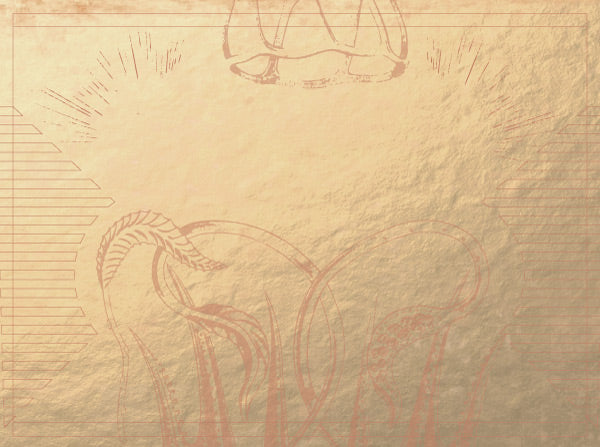Mokumegane is a Japanese metalsmithing technique that can be traced back about 400 years, to the beginning of the Edo period in Japan. First used for decorative tsubas, the sword guards of samurai swords, mokumegane was preceded by the technique Guribori, a Chinese carved lacquer technique. (Takahashi, 2018) Mokume involves fusing different metals, usually creating a eutectic bond. A stack of fused metals is referred to as a billet. The billet is reduced by forging and rolling, and metal is removed/distorted and repeatedly forged to make various patterns such as the famous woodgrain and water droplet/fish eye patterns.


Mokume requires a lot of experimentation and practice to learn. Some metals cannot make a eutectic bond or misbehave in the laminate because metals have different working characteristics. It could be possible to fuse them but not to work them, or it could be impossible for certain metals to form a eutectic bond at all. However, it may be possible to work around these constraints in a high-tech manufacturing environment. Ian Furguson has achieved this, overcoming the constraints of a small shop and making mokumegane laminates with a long list of unusual metals in a technologically advanced university machine shop setting.
I have been trying to learn mokume in my spare time for about 14 years, only making real progress in the last 3 years, after reading all the books I could find on the topic, and taking a virtual class with Eric Burris of Mokume Gane Workshops, during the pandemic in 2022. Prior to taking that class, I had been attempting to do mokume in the western style; solder-bonded mokume. Tiffany and Company, whose works I have always admired, made vessels in this manner during the art nouveau/ art deco periods, however these works are rife with pits and imperfections. It is thought that Western artists appropriating the Japanese technique of mokumegane during this period assumed it was being made using solder, and this misconception lives on in some circles. Unfortunately, solder-bonded mokume is still the only form of mokume reviewed in a number of western metalsmithing text books and taught in some otherwise respectable schools.
There are different methods of making fusion-bonded mokumegane, including using a "mini kiln" and torch, or in an electric kiln. I use my Paragon electric burnout kiln. Currently, I am working on laminates in gold, copper, silver and palladium alloys for bridal projects and naturalistic jewels. I have made some beautiful insects and spiders, some of which have already sold to private collections.

As with so many of my favorite techniques (enameling, hand-engraving, granulation, stone-setting...) fusion-bonded mokumegane is a very labor-intensive and relatively expensive technique, but the result is well-worth the cost and effort.
There are other related, quite interesting techniques that can be made from a fused laminate which I plan on experimenting with in jewelry projects and will cover in a future post. Thank you for joining in my exploration of this special technique.
For more information or custom ordering, email me: peggyskemp@gmail.com


Sources: Textbook of Mokume Gane, Masaki Takahashi, NPO Japanese Mokumegane Research Institute, 2018
Leave a comment
Comments will be approved before showing up.
Also in PeggySkemp

On The Care and Maintenance of Jewelry
Your jewelry can grow in value over time when it is properly maintained and cared for. The manner of care depends on what metal and gemstones are contained in the jewel in question.




